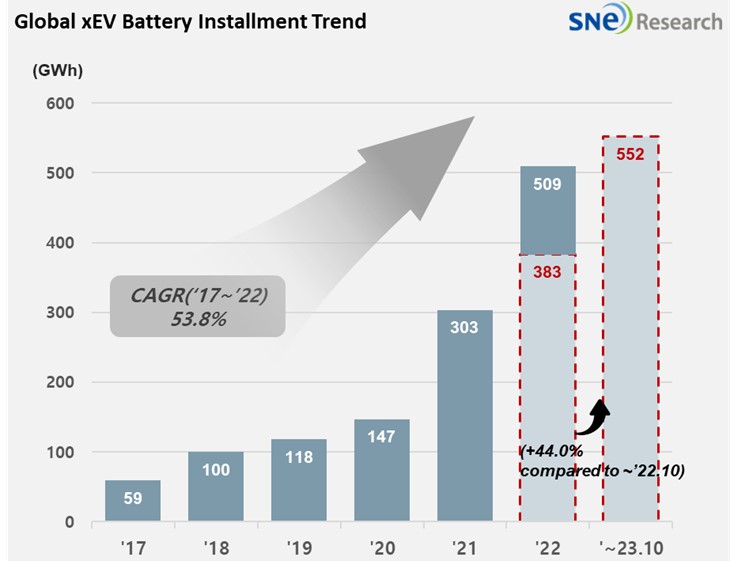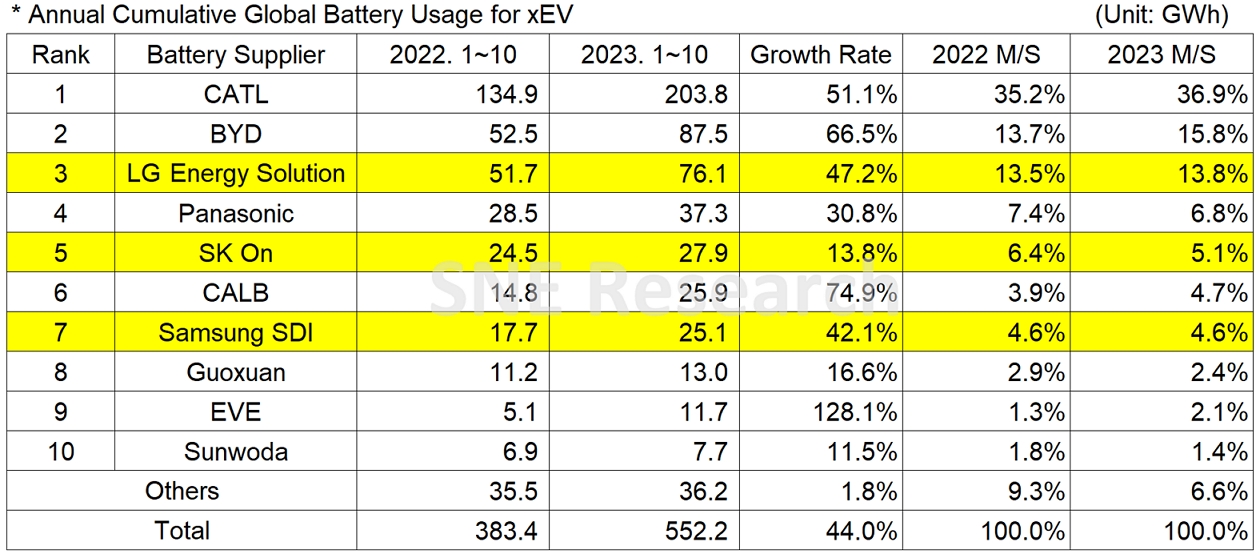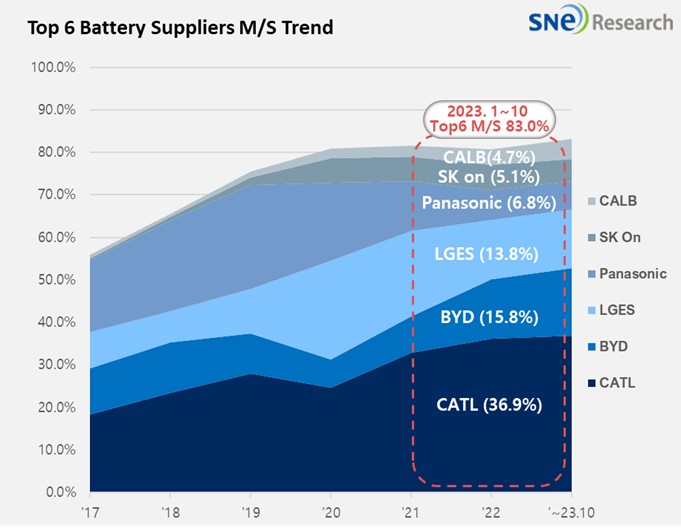From Jan to Oct in 2023, Global[1] EV Battery Usage[2] Posted 552.2GWh, a 44.0% YoY Growth
- From Jan to Oct in 2023, K-trio’s M/S recorded 23.4%
From January to September 2023, the amount of energy held by batteries
for electric vehicles (EV, PHEV, HEV) registered worldwide was approximately 552.2GWh,
a 44.0% YoY growth.

(Source: 2023 Nov. Global Monthly EV and Battery Monthly Tracker, SNE Research)
The combined market shares of K-trio companies were 23.4%, declined by 1.1%p compared to the same period of last year, but all of them stayed in the upward trend in terms of battery usage. LG Energy Solution took the 3rd place, posting 47.2%(76.1GWh) YoY growth. While SK On ranked 5th with a 13.8%(27.9GWh) growth, Samsung SDI ranked 7th with 42.1%(25.1GWh) growth.

The
growth trend of K-trio was mainly affected by strong sales of electric vehicle
models equipped with batteries of each company. Samsung
SDI remained in a growth trend based on the increasing sales of BMW i4/i7 and Audi Q8
e-Tron as well as decent sales of Rivian R1T/R1S/EDV and FIAT 500. Samsung
SDI, who decided to target the premium EV battery market, is expected to maintain
stable performance based on continuous demands and high profitability as the portion
of high-value-added battery P5 is increased even when the xEV market has
recently been affected by concerns about a possible slowdown in growth. SK On
also recorded growth thanks to solid sales of Hyundai IONIQ 5, KIA EV6,
Mercedes EQA/B, and Ford F-150 Lightning. Recently, as
it has been reported that SK On reached a decent level of accomplishment in
developing prismatic and LFP battery, which is highly sought after in the
market, the company is expected to see a growth in its market share especially
focusing on the North American region. LG Energy Solution posted the highest
growth among the K-trio, propped up with favorable sales of Tesla Model 3/Y,
VW ID. series, and Ford Mustang Mach-E that are highly popular in Europe and
North America. These days, OEMs such as Tesla, Ford, and GM have been expanding
the installation ratio of LFP battery and uncertainties have risen due to
concerns about a slowdown of demand for EV. However, despite the current
circumstances, the launch of new models such as GM’s Blazer EV, to which Ultium
platform is adopted, is expected. This leads to an expectation that any
uncertainties facing SK On and Ultium Cells would be cleared off with the usage
of battery made by Ultium Cells increasing in future.

(Source: 2023 Nov. Global Monthly EV and Battery Monthly Tracker, SNE Research)
[2] Based on battery installation for xEV registered during the relevant period.

